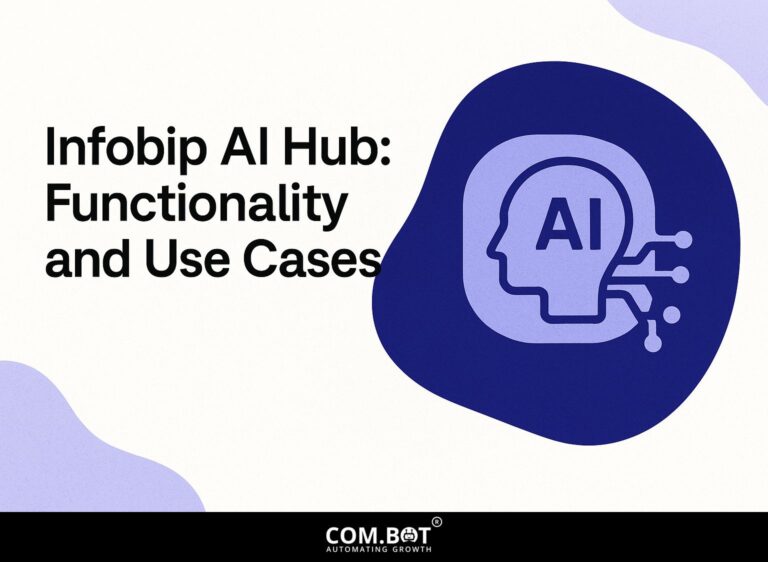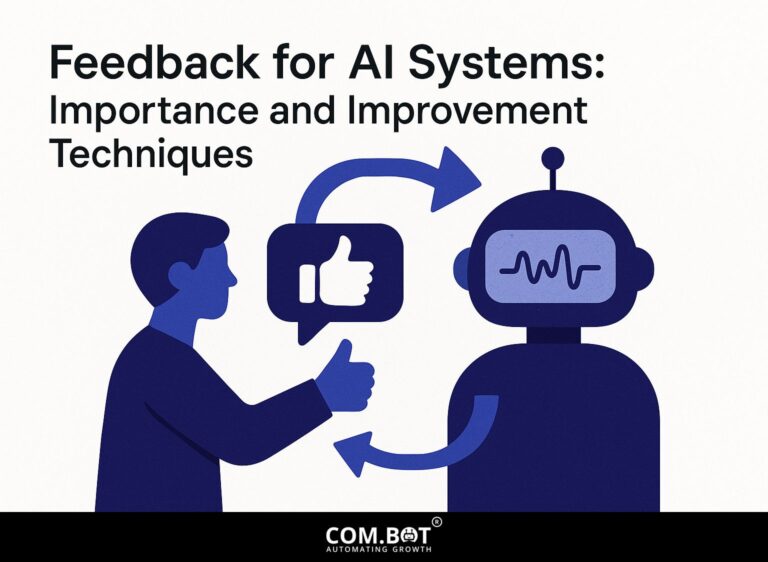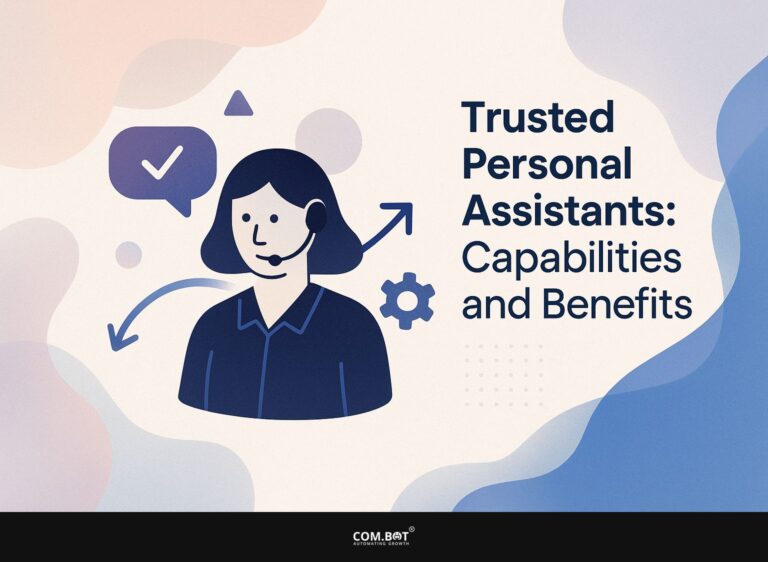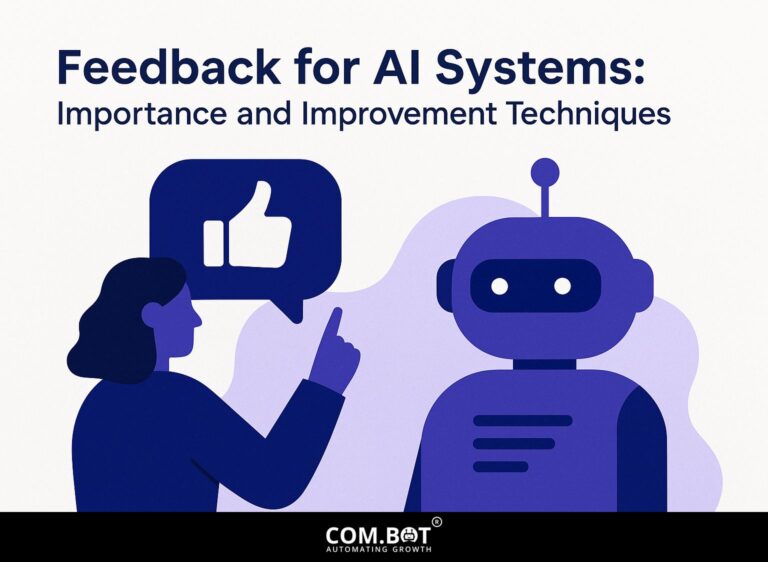Feedback for AI Systems: Importance and Improvement Techniques
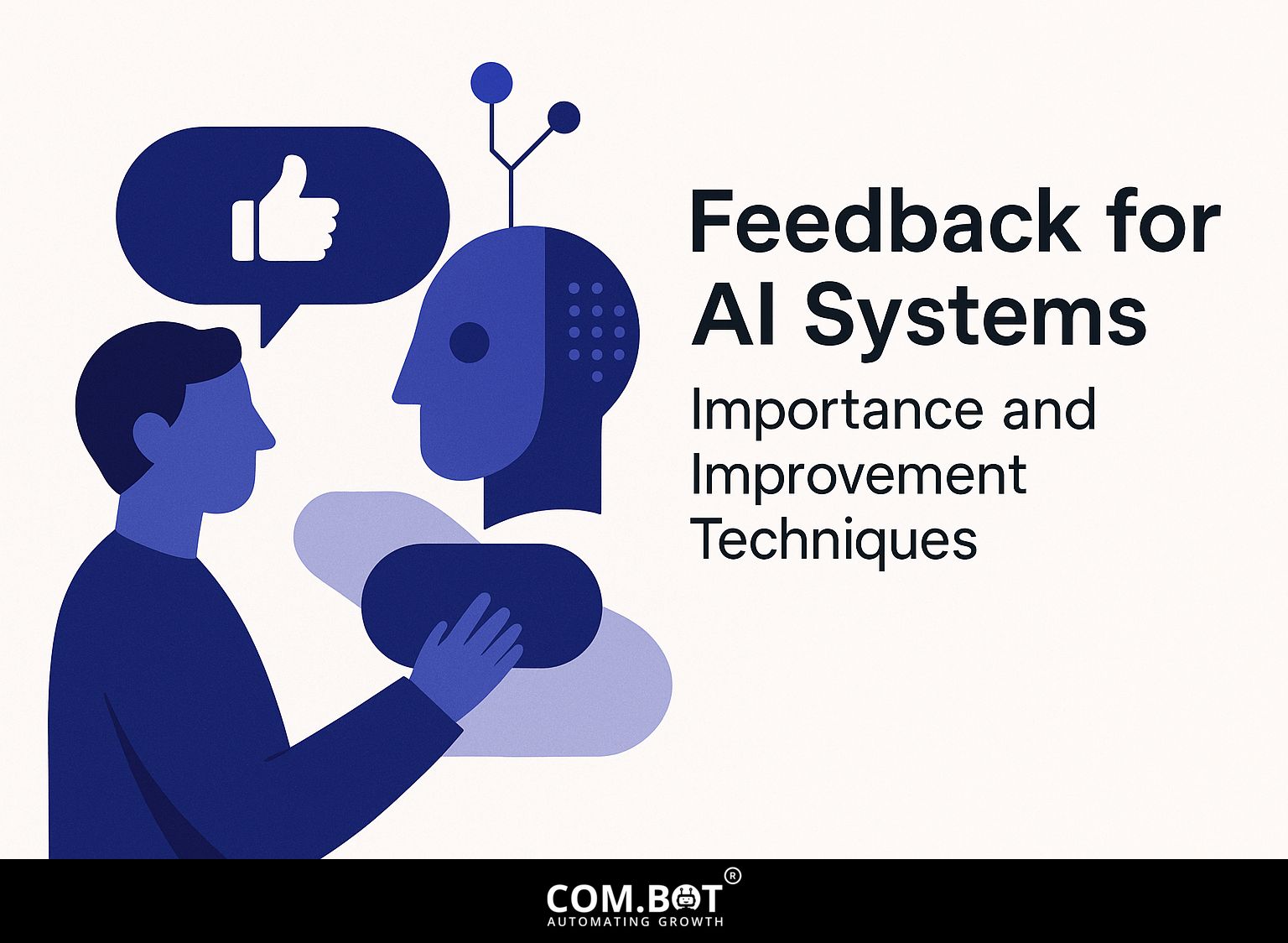
As artificial intelligence changes quickly, useful feedback is important for improving the performance of AI systems. Organizations using machine learning are focusing more on strong monitoring systems to collect information. This article discusses why feedback systems matter and provides useful methods for better model accuracy and user experience. Learn how to set up useful feedback systems and handle difficulties to improve your AI projects.
Key Takeaways:
- 1 Feedback for AI Systems: Importance and Improvement Techniques
- 2 The Importance of Feedback in AI
- 3 Types of Feedback Mechanisms
- 4 AI Feedback Mechanisms Statistics
- 5 Techniques for Gathering Feedback
- 6 Implementing Feedback Loops
- 7 Challenges in Feedback Implementation
- 8 Upcoming Developments for AI Feedback Systems
- 9 Frequently Asked Questions
- 9.1 What is the importance of feedback for AI systems?
- 9.2 How does feedback help in improving AI systems?
- 9.3 What are some common techniques used for providing feedback to AI systems?
- 9.4 Why is continuous feedback important for AI systems?
- 9.5 How can AI systems be trained to use feedback effectively?
- 9.6 What are some potential challenges in implementing feedback for AI systems?
Feedback for AI Systems: Importance and Improvement Techniques
Giving useful feedback is important for making AI systems better, helping them get better over time, and making sure they satisfy user needs and company objectives.
This article examines why feedback is important in AI, showing how it helps improve algorithms, makes user experiences better, and encourages new ideas. Related insight: Feedback for AI Systems: Importance and Improvement Techniques
Key techniques for improvement include:
- Systematic user surveys
- A/B testing to gauge system responses
- Using repeated development steps
For example, using user surveys after they engage with the AI can provide useful information about how well it is working, and testing different algorithms can show which one works best in actual situations.
By using these methods, organizations can create a strong feedback system that supports ongoing AI growth.
Definition and Purpose
Feedback in AI systems mainly helps to give useful information that improves how decisions are made and the system works.
Google uses people’s comments and suggestions to improve its search formulas. When users engage with search results-clicking on links, spending time on pages, or returning to the search page quickly-this data informs Google’s ranking adjustments.
The algorithm identifies which results users like, improving its performance over time. Businesses can implement similar strategies by regularly collecting user feedback through surveys or analytics tools like Hotjar, enabling them to fine-tune their AI systems and meet user expectations more effectively.
Historical Context
Historically, AI feedback mechanisms have evolved from basic user input to sophisticated systems employing machine learning for real-time performance analysis.
Past systems relied on simple user ratings, but neural networks now enable a better grasp of user behavior.
For example, Netflix uses changing algorithms to improve recommendations based on what viewers like, greatly increasing user involvement.
Tools like Amazon SageMaker provide powerful capabilities for creating custom machine learning models that analyze feedback data.
Companies like Google have changed their advertisement algorithms over time, using user feedback instantly to improve ad placements.
These developments show the progress from basic techniques to flexible and interactive feedback systems.
The Importance of Feedback in AI
Adding strong feedback processes to AI systems greatly improves model accuracy and makes user experiences better in many uses. See also: Feedback for AI Systems: Importance and Improvement Techniques for a deeper understanding of how feedback mechanisms can enhance AI functionality.
Enhancing Model Accuracy
Utilizing user feedback can improve model accuracy by up to 30%, as it allows for the identification and correction of errors within training data.
One effective technique is reinforcement learning, where models learn optimal behaviors through feedback loops. For example, after a model’s prediction is assessed, the feedback can adjust its parameters to minimize errors.
Metrics like accuracy and recall can show major improvements; research indicates that models using user feedback can increase accuracy by an average of 25%. Using methods such as active learning, where the model asks users for labels on uncertain data, helps improve and adjust in different settings.
Improving User Experience
AI systems that use user feedback have shown a 25% increase in user participation and happiness by changing to fit user preferences well.
For instance, a banking app that integrated user suggestions improved its interface, leading to a higher Net Promoter Score (NPS) more than two months later.
In the same way, a fitness app that used user feedback on how features worked saw a 30% increase in daily active users.
Tools like Usabilla and Typeform can effectively gather user opinions, while analytics platforms like Google Analytics can track engagement before and after these changes, providing concrete data on the impact of user-driven improvements.
Types of Feedback Mechanisms
Different methods for gathering feedback, from users actively providing input to collecting data automatically, help improve AI systems. Understanding the various feedback mechanisms and improvement techniques can significantly enhance the effectiveness of AI development.
AI Feedback Mechanisms Statistics
AI Feedback Mechanisms Statistics
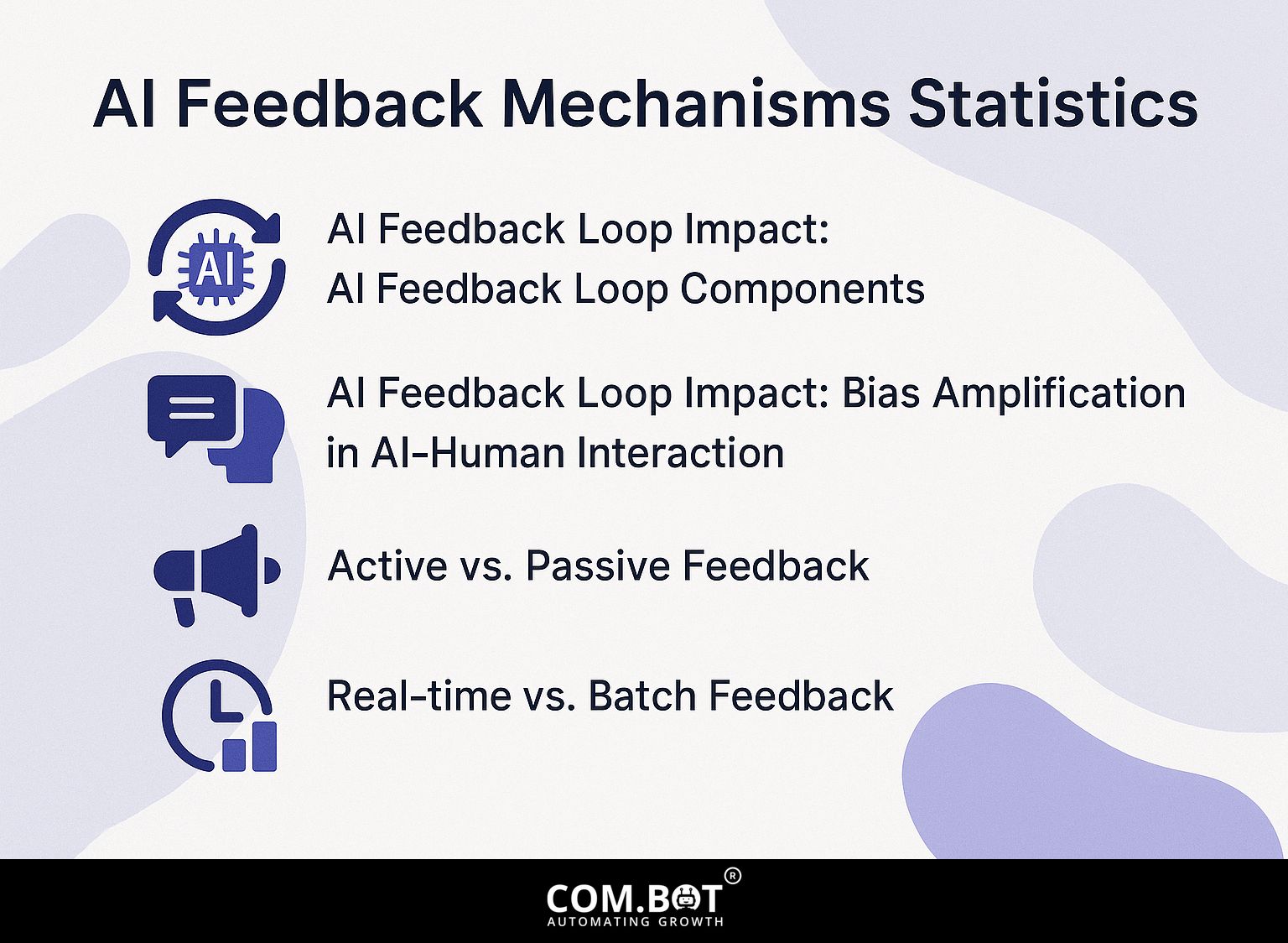
AI Feedback Loop Impact: AI Feedback Loop Components
AI Feedback Loop Impact: Bias Amplification in AI-Human Interaction
The AI Feedback Mechanisms Statistics Data shows how important feedback loops are in AI systems, especially in affecting how accurate models are and increasing bias during interactions between AI and humans. The information highlights the advantages and difficulties of using AI feedback loops in company work.
The dataset reveals that 80% Many businesses use AI feedback loops, showing a strong move towards better decision-making and improving how they work. Feedback loops allow AI systems to learn from their outputs and adjust for better accuracy over time. This process has led to a 24.8% improvement in model precision Emphasizing how repeated practice improves AI models.
However, the data also shows a major issue: the increase of bias. The Bias Amplification in AI-Human Interaction metrics show that bias in AI outputs can be amplified by 53.1% due to these feedback mechanisms. This suggests that while AI systems are designed to learn and improve, they can also inadvertently perpetuate and exacerbate existing biases present in the data they are trained on.
The way people and AI work together can make bias worse by 6.43%. This highlights the importance of careful monitoring and management of AI systems to prevent unintended consequences. Ensuring diversity in training data and continuously auditing AI outputs can help mitigate these biases.
In conclusion, while AI feedback loops Greatly improve model accuracy, but they can also increase the chance of bias. Businesses need to weigh these pros and cons, using strong plans to achieve fair and impartial results with AI. This means improving AI algorithms and encouraging openness and responsibility in AI use.
Active vs. Passive Feedback
Active feedback involves direct user interaction, such as surveys or interviews, while passive feedback collects data automatically through user interactions.
Tools like UserTesting help you collect opinions and information from actual users using planned interviews or usability tests. For example, you can arrange a test to watch how people move through a website, spotting areas where they have difficulty.
On the other hand, passive feedback uses tools like Google Analytics to track how users interact with a site by recording actions such as page visits and how quickly they leave. This offers a broad look at how users are interacting with the content without needing their direct input.
By using both methods, you can learn more about user experiences and improve your products successfully.
Real-time vs. Batch Feedback
Real-time feedback provides immediate information to make necessary adjustments, while batch feedback analyzes data at intervals to identify trends and anomalies.
Tools like Prometheus are essential in situations that need fast decisions, such as checking how systems are working or finding problems in production settings.
For instance, a DevOps team might use Prometheus to receive alerts if CPU usage spikes unexpectedly, allowing them to take action immediately.
On the other hand, batch analysis tools like Tableau are great for strategic planning, giving a complete overview of past data patterns, like quarterly sales results. This allows teams to make informed decisions based on long-term trends rather than immediate fluctuations.
Techniques for Gathering Feedback
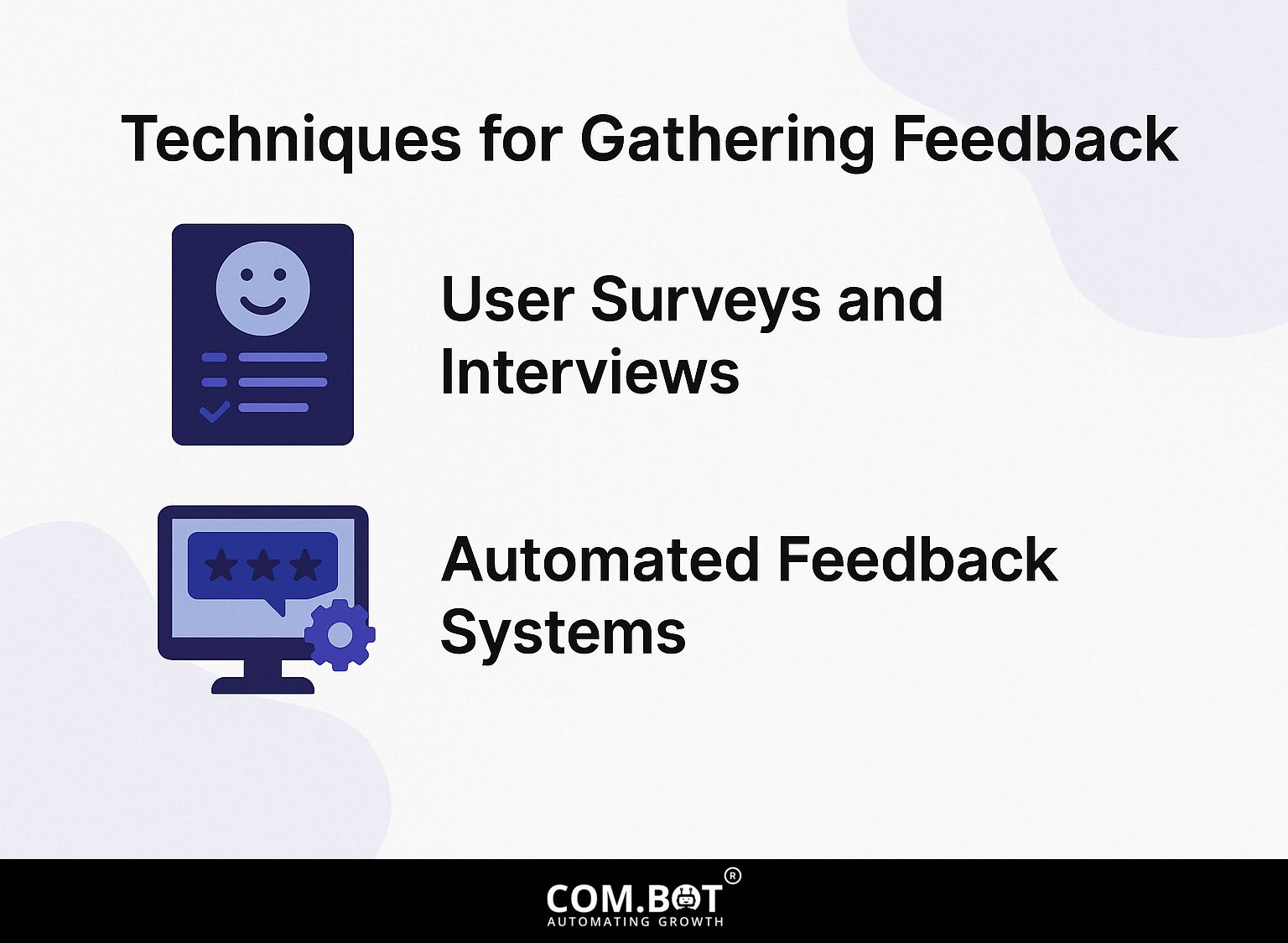
Collecting feedback in various methods improves the accuracy of information and enhances the performance of AI systems over time.
User Surveys and Interviews
User surveys can provide useful feedback that can help make AI systems work better, aiming for a 20% response rate through platforms like SurveyMonkey.
To increase the number of people who complete your survey, think about offering rewards like gift cards or discounts.
Make clear and short questions using both multiple choice and open-ended types to increase participation. Tools like Google Forms can help create visually appealing surveys for free.
Send follow-up emails to participants, emphasizing the survey’s significance.
For interviews, templates that include structured questions about user experience can guide the conversation effectively.
Using these approaches together will give better information about what users want and like.
Automated Feedback Systems
Systems that automatically provide feedback, like those using algorithms to spot unusual patterns in monitoring tools, can quickly notify users about performance issues.
For effective implementation, consider using tools like Label Studio for data labeling and Sentry for monitoring application health.
These platforms collect user feedback on their own, which lets you change your systems as needed. Label Studio helps organize data for better clarity, while Sentry alerts you if performance drops.
Even though these systems reduce the need for manual work, they still need some setup at the start and regular management to keep the feedback loops useful and working well.
Implementing Feedback Loops
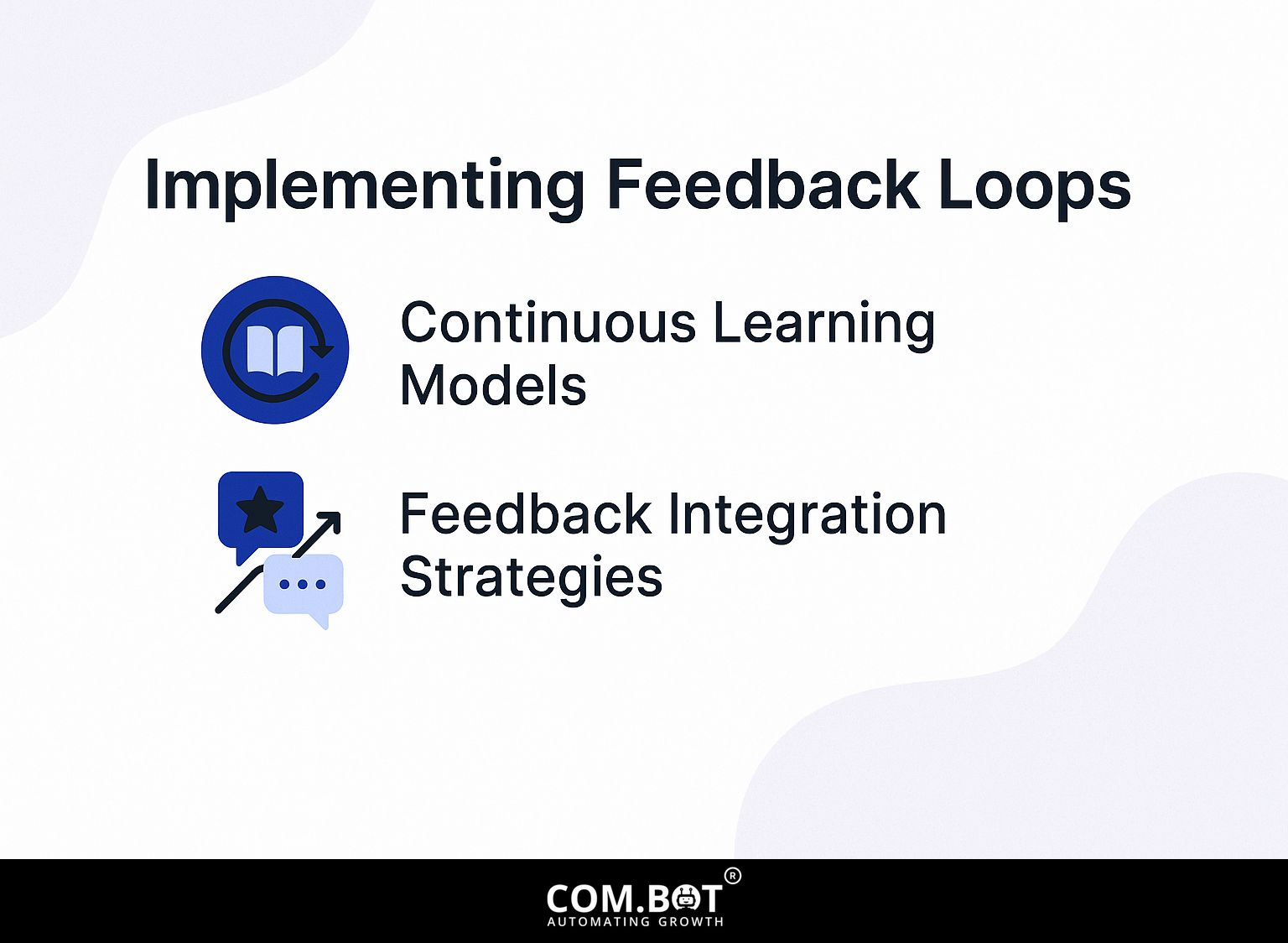
Setting up effective feedback loops enables AI systems to keep learning and improving, leading to better and consistent performance. This approach aligns with the principles outlined in our analysis of Feedback for AI Systems: Importance and Improvement Techniques.
Continuous Learning Models
Continuous learning models use ongoing feedback to update algorithms, leading to major improvements in how things work.
Amazon improves product suggestions by studying how users interact and what they buy immediately as it happens.
Companies like Google use this approach in their search algorithms, adjusting to new content and user behavior quickly.
In finance, firms use continuous training to identify fraud, frequently updating models with fresh transaction data to improve accuracy.
Using these models helps businesses make better decisions, keep customers happy, and outperform competitors.
Feedback Integration Strategies
Effective feedback integration strategies involve aligning feedback mechanisms with AI business objectives to drive measurable performance improvement.
To do this, think about using the OKR method. Begin by defining clear objectives, such as improving model accuracy or enhancing user satisfaction.
For instance, you could set a goal to increase model performance by 15% over the next quarter. Then, establish key results that include gathering user input through surveys or monitoring performance metrics.
Tools like Asana or Trello can help track progress and align teams. Review these goals often and adjust your plans according to the feedback you receive to continue improving your AI systems.
Challenges in Feedback Implementation
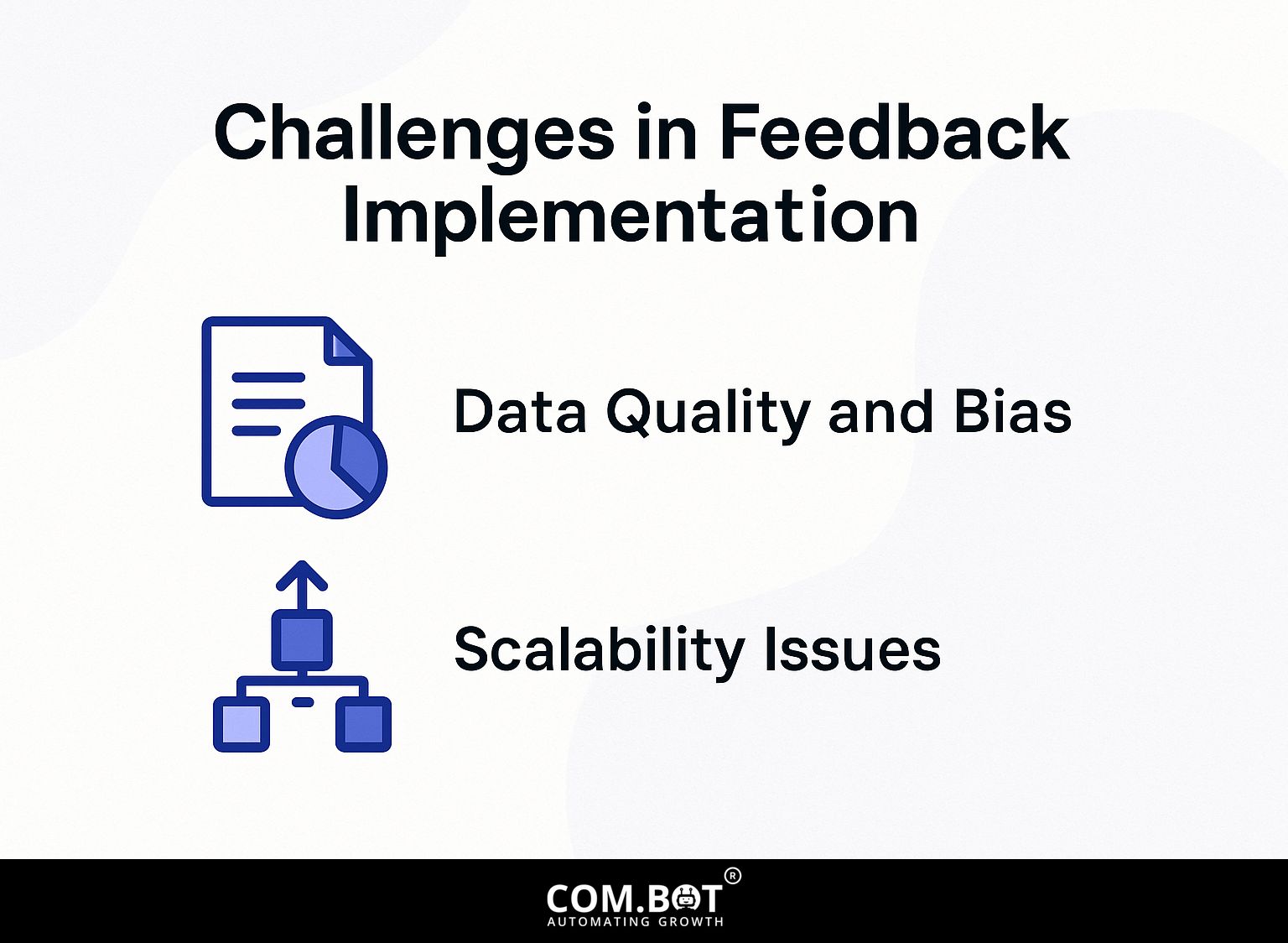
Even though feedback in AI systems is beneficial, putting it into practice can be difficult for organizations.
They need to address these issues to integrate it effectively.
Data Quality and Bias
Problems with data quality and bias can greatly weaken feedback systems, resulting in incorrect AI model outputs.
To mitigate these challenges, organizations should implement diverse data sets to reduce bias during model training. For example, combining public datasets like ImageNet with private collections can improve how well a model applies to different scenarios.
Regular audits are essential; tools such as IBM Watson OpenScale or Google Cloud’s What-If Tool can help assess data quality and bias in AI systems. Schedule check-ins every three months to review the model’s performance. Change the training data if necessary to keep the inputs useful and reflective of real scenarios.
This active method encourages ongoing development and strengthens confidence in AI results.
Scalability Issues
Problems with scalability often occur when feedback systems can’t handle the increase in user interactions, affecting performance measurements and data analysis.
To address these problems, using flexible structures is necessary. For example, using cloud services like AWS allows you to change resources quickly, ensuring your system manages increased traffic smoothly.
Use AWS Lambda for serverless computing to manage occasional and high-demand tasks without needing to manage servers all the time. Using a distributed database, such as Amazon DynamoDB, can improve data retrieval speeds and reliability under heavy traffic.
These strategies allow for immediate analysis and improve the system’s ability to handle stress.
Upcoming Developments for AI Feedback Systems
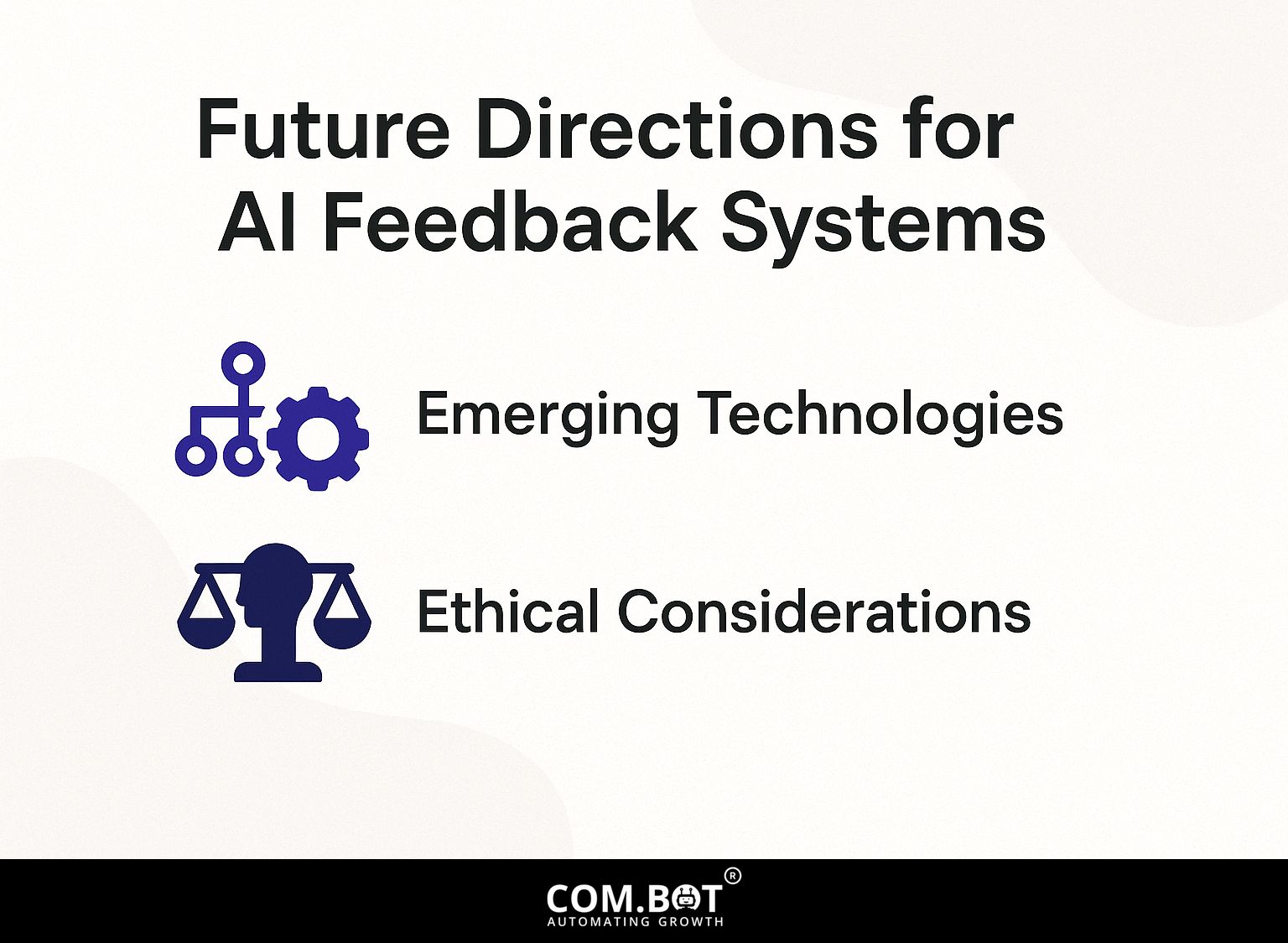
As AI keeps improving, feedback systems will use new technologies and deal with ethical issues affecting how users interact. For an extensive analysis of this trend, our deep dive into feedback improvement techniques for AI systems explores how these advancements can reshape user engagement.
Emerging Technologies
New technologies such as reinforcement learning and advanced sentiment analysis tools are changing how feedback is included in AI systems.
For instance, reinforcement learning techniques allow systems to learn from user interactions by adjusting their algorithms based on feedback loops, improving their performance over time.
Tools like OpenAI’s Gym provide a suite of environments for training AI models in various scenarios.
Advanced sentiment analysis tools, such as IBM Watson, can gauge user emotions from textual inputs, refining the AI’s responses.
These technologies work together to make AI’s responses better, leading to improved user experiences and more accurate results.
Ethical Considerations
It’s important to consider ethics in AI feedback systems to keep user trust and make sure feedback improves experiences instead of changing them unfairly.
To handle these challenges, companies should apply specific strategies.
- First, prioritize data privacy by utilizing transparent data handling practices, such as anonymizing user information before use.
- Second, frequently examine algorithms for biases and correct them to guarantee equal treatment for all users.
- Third, get users to participate by providing simple options for them to share their opinions on the feedback system itself, promoting collaboration.
By following these steps, organizations uphold ethical standards and create a loyal group of users who feel important and respected.
Frequently Asked Questions
What is the importance of feedback for AI systems?
Feedback is important for AI systems because it helps make them more accurate and effective. It allows the system to learn from its mistakes and make necessary adjustments, leading to better results.
How does feedback help in improving AI systems?
Feedback gives important details to AI systems that help find and correct mistakes and biases. This improves the system’s abilities and makes it better at managing different tasks.
What are some common techniques used for providing feedback to AI systems?
Some common techniques for providing feedback to AI systems include user ratings, surveys, and human evaluation. These methods collect data on user satisfaction and help in identifying areas for improvement.
Why is continuous feedback important for AI systems?
Ongoing feedback is essential for AI systems because it helps them improve all the time. It helps in keeping up with changing user needs and preferences, ensuring the system remains relevant and effective.
How can AI systems be trained to use feedback effectively?
AI systems can be trained to use feedback effectively through the use of reinforcement learning techniques. This involves rewarding the system for desired actions and providing corrective feedback for incorrect actions.
What are some potential challenges in implementing feedback for AI systems?
Some potential challenges in implementing feedback for AI systems include privacy concerns, data bias, and the need for human oversight. Tackling these challenges is necessary for using feedback in AI systems ethically and effectively.


